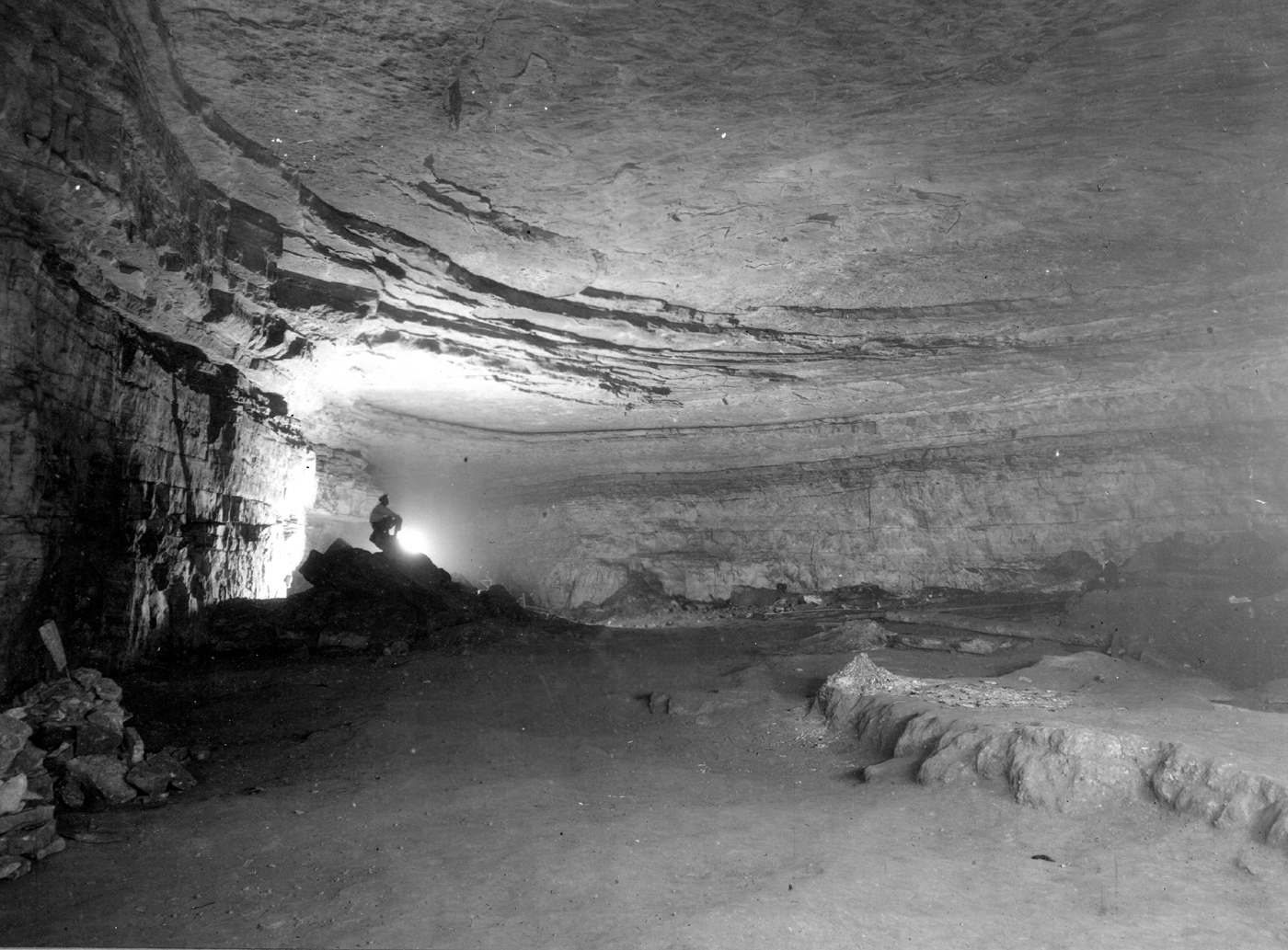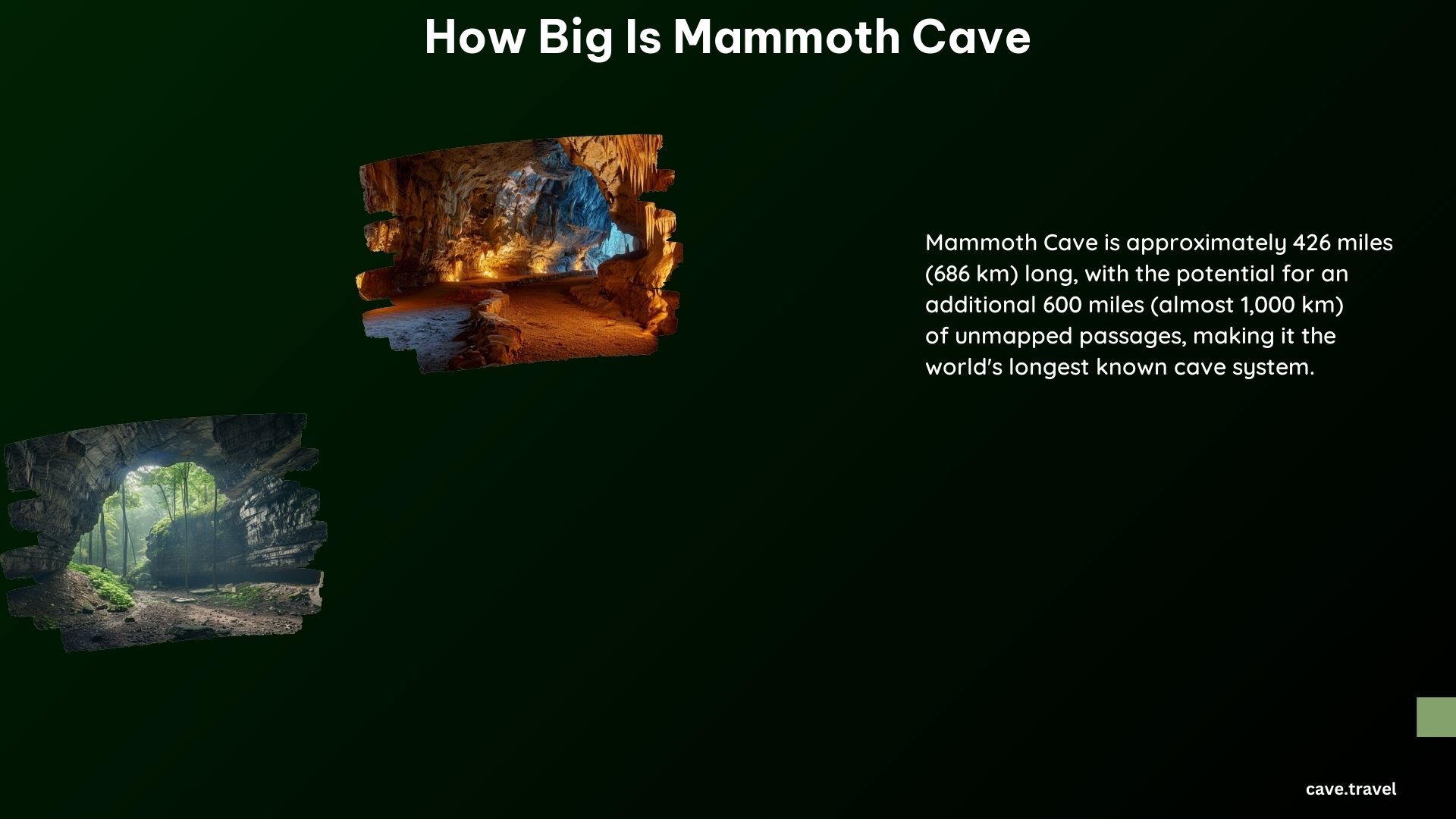Mammoth Cave, located in Mammoth Cave National Park, Kentucky, is the world’s longest known cave system, spanning over 426 miles (686 km) in length, with the potential for an additional 600 miles (almost 1,000 km) of unmapped passages. The cave system covers an area of 52,830 acres (21,380 ha) primarily in Edmonson County, with smaller areas extending into Hart and Barren counties.
The Vast Expanse of Mammoth Cave

Mammoth Cave is an incredibly expansive and complex cave system, with a total mapped length of 426 miles (686 km). However, this is just the tip of the iceberg, as it is estimated that there could be an additional 600 miles (almost 1,000 km) of unmapped passages waiting to be discovered.
The cave system covers a vast area, stretching across 52,830 acres (21,380 ha) primarily in Edmonson County, with smaller areas extending into Hart and Barren counties. This massive underground network is the result of millions of years of geological processes, with the oldest rocks in the cave system dating back to the Mississippian period, roughly 350 million years old.
Exploring the Depths of Mammoth Cave

Mammoth Cave has a rich history of human exploration, dating back around 5,000 years. Over the centuries, many intrepid explorers have ventured into the depths of the cave, making significant contributions to our understanding of this remarkable natural wonder.
One of the most notable figures in Mammoth Cave’s history is Stephen Bishop, an enslaved African American who explored and mapped the cave in the 1840s. Other important explorers include the Hanson and Hunt families, as well as Floyd Collins, whose tragic death in 1925 brought national attention to the cave.
Today, the Cave Research Foundation (CRF) continues to play a crucial role in mapping and exploring Mammoth Cave, building on the work of past generations. Their efforts have been instrumental in expanding our knowledge of the cave system and its vast network of passages.
Mammoth Cave’s Significance
Mammoth Cave’s significance extends far beyond its impressive size and length. The cave system has been recognized for its outstanding universal value, earning it the designation of a UNESCO World Heritage Site in 1981. It has also been recognized as an International Biosphere Reserve (1990) and an International Dark Sky Park (2021), highlighting its ecological and scientific importance.
Visitors to Mammoth Cave National Park can experience the cave’s grandeur through a variety of activities, including guided tours, hiking, biking, horseback riding, fishing, and kayaking. The park has been a popular destination for tourists since it was established as a national park in 1941, attracting visitors from around the world.
Conclusion
Mammoth Cave is a true natural wonder, a testament to the incredible power of geological processes and the enduring spirit of human exploration. With its vast network of passages, rich history, and ecological significance, Mammoth Cave continues to captivate and inspire visitors from all over the globe. As we continue to explore and study this remarkable cave system, we can only imagine what other secrets it may hold.
References
- National Park Service. (2022, September 7). Exploring the World’s Longest Known Cave. Retrieved from https://www.nps.gov/articles/000/exploring-the-worlds-longest-known-cave.htm
- National Park Service. (2024, May 23). Mammoth Cave. Retrieved from https://www.nps.gov/maca/index.htm
- National Parks. Mammoth Cave National Park. Retrieved from https://www.nationalparks.org/explore/parks/mammoth-cave-national-park
- YouTube. (2022, July 4). Why Mammoth Cave is So. Freaking. Big. Retrieved from https://www.youtube.com/watch?v=M2BzzLPsrvA
- Wikipedia. Mammoth Cave National Park. Retrieved from https://en.wikipedia.org/wiki/Mammoth_Cave_National_Park
